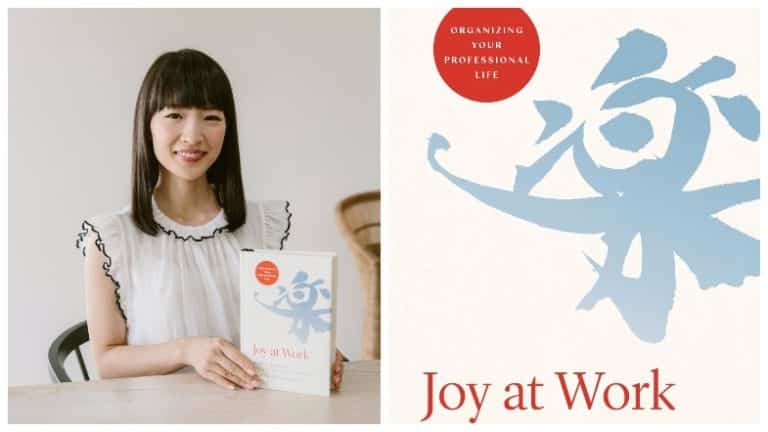Key Takeaway: The KonMari method involves visualizing your ideal work life in order to tidy based on what sparks joy. This helps to clarify the work you like to do and can provide the inspiration to alter your career path.
Who would appreciate this book: middle managers, project managers, people overwhelmed by work loads, people who feel disorganized or have a messy workspace, executives who feel like the office isn’t a respectful place or has a high cost for disorganization, college students
Work is based on accumulated experience. Through working, we grow. Nothing is all thrills right from the start. Even if something is not going well or doesn’t feel right at this moment, if it is leading you toward a future that sparks joy, then think of it as a growing pain. If your work life doesn’t spark joy all the time, don’t assume that you’re a failure. Instead, recognize the potential of this moment to bring you closer to your ideal, enjoy the process, and celebrate the fact that you’re still growing. Be confident that you are creating a joyful work life right now through the daily process of acquiring experience. ~ Marie Kondo, Joy at Work
Upon starting Joy at Work, you’re struck with a sense of déjà vu that you’ve heard this all before. In fact, if you’ve read either of Kondo’s other two books, the first chapters repeat much of that information. Why she believes in tidying, stories of people who have successfully tidied and improved their lives, and the basics of her tidying methods
The first few chapters are written by Kondo and the rest of the book, except the final chapter, are written by Sonenshein. He applies his knowledge of organizational psychology and combines it with Kondo’s tidy principles to show how one can tidy everything from your network, to your meetings, to your team. The stats on costs in terms of lost productivity and time to finding documents and emails and in unproductive meetings should be enough to convince any executive to commit to having the whole office spend time tidying. For instance, even reading irrelevant emails because people don’t know when to reply all takes away from everyone’s productivity and costs the company time.
Sonenshein’s advice is for the most part practical and has tips on how to manage email, hold an effective meeting, repair relationships at work, and manage/make decisions. These areas are a struggle for the majority of people at work. The guidance he provides could be implemented even if you didn’t want to tidy but just wanted to make work more enjoyable, and reduce stress and inefficiencies.
Of course the book is filled with anecdotes of people who attempted these methods and found success. From starting new businesses, to promotions, to switching career paths, the book had no shortage of stellar examples of the KonMari method. However, like most career advice books, this book does not have much relevance unless you are a knowledge worker or hold an office job. Also, many of the theories sound great but might be hard to impossible to put in place. For instance, Sonenshein suggests going through meetings and then if they don’t spark joy, either stop going or ask what the organizer thinks your contribution is and if it’s nothing, see if you can get out of it. Obviously, the success of this or even the feasibility of attempting this depends heavily on the culture your work has and the demeanor of management. In some environments, this is a terrible idea, and there was no caveats or guidelines for different approaches or when this might be an idea that backfires.
The penultimate chapter by Sonenshein and the final chapter by Kondo are a call to arms to be brave and to find a way to have your work life spark joy. These chapters contain tips that swings this book into a personal development tone. Kondo reminds the reader that the key to a joyful work life is to figure out how your work contributes to the company/society and that you don’t need to have a big title or payback to be essential.

